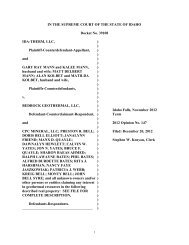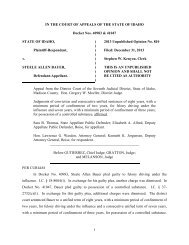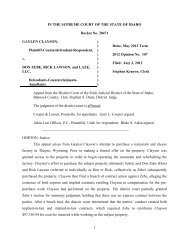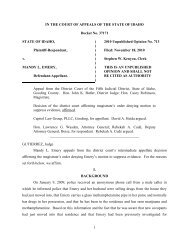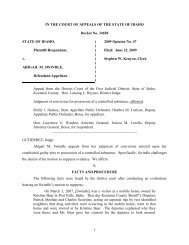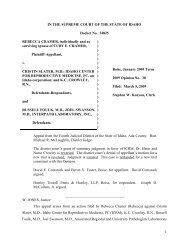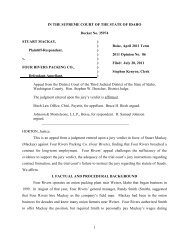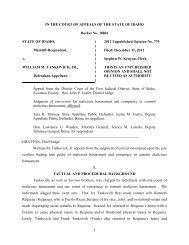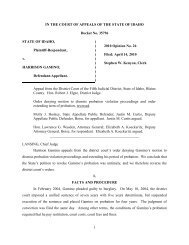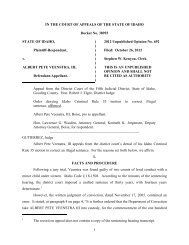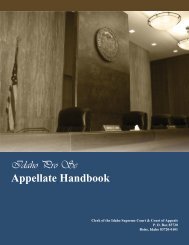April 1, 2013 State v. Hector B. Almaraz, Jr. - Idaho State Judiciary
April 1, 2013 State v. Hector B. Almaraz, Jr. - Idaho State Judiciary
April 1, 2013 State v. Hector B. Almaraz, Jr. - Idaho State Judiciary
You also want an ePaper? Increase the reach of your titles
YUMPU automatically turns print PDFs into web optimized ePapers that Google loves.
<strong>State</strong> calling Officer Cantrell as an expert on “what gang life is like” in general. After the court<br />
allowed Officer Cantrell to give his expert opinion testimony about gangs, the defense moved for<br />
a mistrial, or alternatively to have the entire testimony stricken from the record, arguing that the<br />
<strong>State</strong> failed to prove that BMC was in fact a criminal street gang with the primary purpose to<br />
commit crimes.<br />
The <strong>State</strong> called Lieutenant Stephanie Steele, an officer who was called to duty on the<br />
night of the shooting, to review the bar’s surveillance video tapes. The defense objected to<br />
Lieutenant Steele’s characterization of the video when she testified, on re-direct examination,<br />
that <strong>Almaraz</strong> appeared to be in what she called a “shooter’s crouch” just before Flores was shot.<br />
The defense argued that such an interpretation invaded the province of the jury.<br />
The <strong>State</strong> also called Grant Fredericks to testify as a video expert to assist the jury in<br />
accurately interpreting the bar’s surveillance videos from the night of the murder. When<br />
testifying to his impression of optimized versions of the surveillance videos, the <strong>State</strong> asked<br />
Fredericks if he had formed an opinion about when Flores was shot. The defense objected,<br />
arguing that Fredericks’ background in analyzing hundreds of videos was not a sufficient<br />
foundation to testify about a person’s physiological reaction to being shot. The defense further<br />
argued that the question went to the ultimate issue of the case and thereby invaded the province<br />
of the jury. The district court allowed Fredericks to give his opinion about the particular video<br />
frame that depicts the victim’s response to being shot.<br />
The jury returned a verdict that <strong>Almaraz</strong> was guilty of first-degree murder.<br />
September 26, 2008, <strong>Almaraz</strong> was sentenced to life imprisonment with 40 years fixed. <strong>Almaraz</strong><br />
filed a motion for a new trial which was subsequently denied by the district court. <strong>Almaraz</strong><br />
timely filed a notice of appeal against his conviction and sentence on October 31, 2008.<br />
II. ISSUES ON APPEAL<br />
1. Whether the district court abused its discretion by allowing the jury to hear character<br />
evidence regarding the criminality of BMC and the criminality of gangs generally.<br />
2. Whether the district court erred in failing to suppress Hust’s eyewitness identification as<br />
unreliable due to suggestive practices used by the police.<br />
3. Whether the district court abused its discretion by preventing the defense expert, Dr.<br />
Reisberg, from testifying about the specific interview procedures used by the police<br />
during Hust’s eyewitness identification.<br />
On<br />
4



